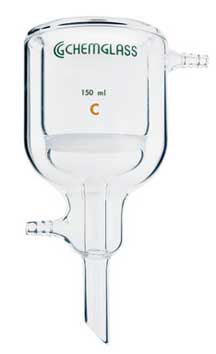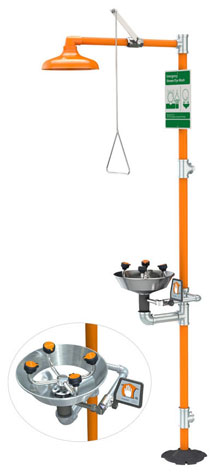



Find all of your laboratory and workplace safety supplies at Safety Emporium!
 Solubility |
 Glossary Index |
 Solvent |
| MSDS Topics |
Free Sites | FAQ's | Regulations | Glossary | Software | Suppliers |
| Books | Forum | Poll | Fun stuff | Quiz | Store | |
| Understand your MSDS with the MS-Demystifier | Search ALL our MSDS info | |||||
A solution is a homogeneous mixture of two or more substances. The substance that is present in the largest amount is called the solvent and the one present in the smaller amount is called a solute.
There can only be one solvent in a solution, but there can be many solutes. Soda pop is a good example - the solvent is water and the solutes include carbon dioxide, sugar, flavorings, caramel color etc.
Solutions can be solids, liquids or gases. The final state of the solution under a given set of conditions depends on the materials and their physical and chemical properties. Some examples include:
| Component 1 | Component 2 | Solution | Examples |
|---|---|---|---|
| Solid | Solid | Solid | Brass (a mixture of ~70% copper and ~30% zinc), "silver" dental fillings (a solid 8:1 mixture of tin and mercury) |
| Solid | Liquid | Liquid | Sugar dissolved in water, salt water. |
| Solid | Gas | Solid | Hydrogen gas adsorbed to palladium metal |
| Liquid | Gas | Liquid | Carbon dioxide dissolved in water (soda water) |
| Liquid | Liquid | Liquid | Alcohol in water, antifreeze (ethylene glycol in water), gasoline (a complex mixture of hydrocarbons) |
| Gas | Gas | Gas | Air, natural gas (mostly methane and ethane), synthesis gas (a mixture of hydrogen and carbon monoxide). |

Filter mixtures at constant temperature with laboratory frits and filters from Safety Emporium.
A solution that has some solid present is not a solution, but a heterogeneous mixture.
Solutions fall into three general classes:
That last item sounds suspicious - how can something hold more material than it can hold? This is best illustrated by example:
We know that hot water dissolves more sugar than cold water. When we cool a saturated solution of hot sugar water, the water can no longer keep all of the sugar dissolved. Some sugar must crystallize from the solution. However, crystallization requires a nucleation site such as another sugar crystal or a speck of lint for the crystal to grow. If our container is scrupulously clean, the crystals have no place to begin growth! But if we add a crystal of sugar to the supersaturated solution, the "extra" sugar will rapidly drop of out this metastable solution until the solution is again saturated. There are some great general chemistry demos of this principle; see Further Reading below.
When a solid deposits from a solution the process is called crystallization if the solid is crystalline and precipitation if the solid is a powder or amorphous material. The solid that is formed is called the precipitate and the liquid solution that remains is called the supernatant or "mother liquor".

Safety Emporium carries all kinds of eye/face washes, safety showers, drench hoses and more.
Safety Data Sheets are required to report the physical and chemical characteristics of the material in Section 9 (physical and chemical properties) and that includes the solubility (if known). In addition, SDS's may discuss the properties, stability, or hazards of solutions. "Solution" can also appear in Section 4 (first-aid measures) (for example, saline solutions) or in Section 6 (accidental release measures) procedures (for example, "use a solution of XX and YY to...").
See also: Concentration units, mole, solubility, solvent, vapor.
Additional definitions from Google and OneLook.
Entry last updated: Monday, January 16, 2023. This page is copyright 2000-2025 by ILPI. Unauthorized duplication or posting on other web sites is expressly prohibited. Send suggestions, comments, and new entry desires (include the URL if applicable) to us by email.
Disclaimer: The information contained herein is believed to be true and accurate, however ILPI makes no guarantees concerning the veracity of any statement. Use of any information on this page is at the reader's own risk. ILPI strongly encourages the reader to consult the appropriate local, state and federal agencies concerning the matters discussed herein.